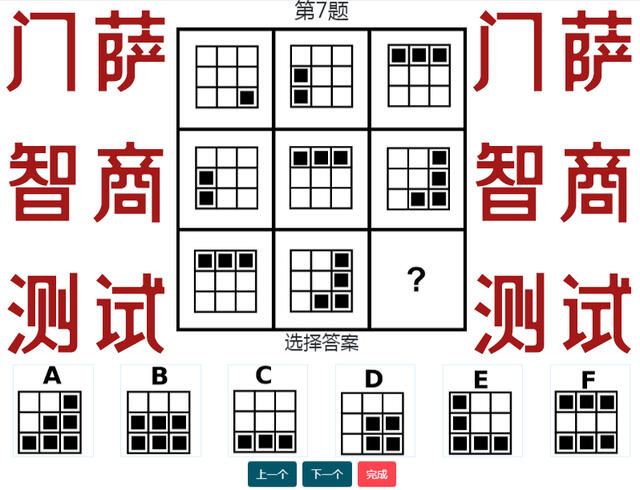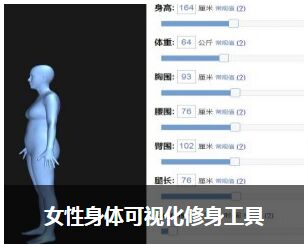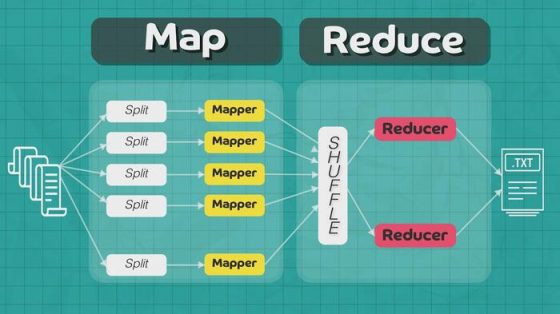前言
花了一个礼拜的时间阅读了 how tomcat works,本文基于此书,整理了一下Tomcat 5的基本架构,其实也没什么多复杂的东西,无非是解析Http请求,然后调用相应的Servlet。另推荐看CSAPP的网络编程那一章
顺便问问有无需要暑假实习的?坐标杭州,Java后台方向。有意可联系我 threezj@hotmail.com
基本架构
Tomcat由两个模块协同合作
connectorcontainer
connector 负责解析处理HTTP请求,比如说请求头,查询字符串,请求参数之类的。生成HttpRequest和HttpResponse
之后交给container,由它负责调用相应的Servlet。
Connector
Tomcat默认的Connector为HttpConnector。作为Connector必须要实现Connector这个接口。
Tomcat启动以后会开启一个线程,做一个死循环,通过ServerSocket来等待请求。一旦得到请求,生成Socket,注意这里HttpConnector并不会自己处理Socket,而是把它交给HttpProcessor。详细看下面代码,这里我只保留了关键代码。
public void run() {
// Loop until we receive a shutdown command
while (!stopped) {
Socket socket = null;
try {
socket = serverSocket.accept(); //等待链接
} catch (AccessControlException ace) {
log("socket accept security exception", ace);
continue;
}
// Hand this socket off to an appropriate processor
HttpProcessor processor = createProcessor();
processor.assign(socket); //这里是立刻返回的
// The processor will recycle itself when it finishes
}
}
注意一点,上面的processor.assign(socket);是立刻返回的,并不会阻塞在那里等待。因为Tomcat不可能一次只能处理一个请求,所以是异步的,每个processor处理都是一个单独的线程。
HttpProcessor
上面的代码并没有显示调用HttpProcessor的process方法,那这个方法是怎么调用的呢?我们来看一下HttpProcessor的run方法。
public void run() {
// Process requests until we receive a shutdown signal
while (!stopped) {
// Wait for the next socket to be assigned
Socket socket = await();
if (socket == null)
continue;
// Process the request from this socket
try {
process(socket);
} catch (Throwable t) {
log("process.invoke", t);
}
// Finish up this request
connector.recycle(this);
}
}
我们发现他是调用await方法来阻塞等待获得socket方法。而之前Connector是调用assign分配的,这是什么原因?
下面仔细看await和assign方法。这两个方法协同合作,当assign获取socket时会通知await然后返回socket。
synchronized void assign(Socket socket) {
// Wait for the Processor to get the previous Socket
while (available) {
try {
wait();
} catch (InterruptedException e) {
}
}
// Store the newly available Socket and notify our thread
this.socket = socket;
available = true;
notifyAll();
}
private synchronized Socket await() {
// Wait for the Connector to provide a new Socket
while (!available) {
try {
wait();
} catch (InterruptedException e) {
}
}
// Notify the Connector that we have received this Socket
Socket socket = this.socket;
available = false;
notifyAll();
return (socket);
}
默认available为false。
接下来就是剩下的事情就是解析请求,填充HttpRequest和HttpResponse对象,然后交给container负责。
这里我不过多赘述如何解析
private void process(Socket socket) {
//parse
....
connector.getContainer().invoke(request, response);
....
}
Container
A Container is an object that can execute requests received from a client, and return responses based on those requests
Container是一个接口,实现了这个接口的类的实例,可以处理接收的请求,调用对应的Servlet。
总共有四类Container,这四个Container之间并不是平行关系,而是父子关系
Engine– 最顶层的容器,可以包含多个HostHost– 代表一个虚拟主机,可以包含多个ContextContext– 代表一个web应用,也就是ServletContext,可以包含多个WrappersWrapper– 代表一个Servlet,不能包含别的容器了,这是最底层
Container的调用
容器好比是一个加工厂,加工接受的request,加工方式和流水线也很像,但又有点区别。这里会用到一个叫做Pipeline的 东西,中文翻译为管道,request就放在管道里顺序加工,进行加工的工具叫做Valve,好比手术刀,Pipeline可添加多个Valve,最后加工的工具称为BaseValve
上面可能讲的比较抽象,接下来我们来看代码。Engine是顶层容器,所以上面invoke,执行的就是Engine的方法。StandardEngine是Engine的默认实现,注意它也同时实现了Pipeline接口,且包含了Pipeline。
它的构造方法同时指定了baseValve,也就是管道最后一个调用的Valve
public StandardEngine() {
super();
pipeline.setBasic(new StandardEngineValve());
}
好,接着我们看invoke,这个方法是继承自ContainerBase。只有一行,之间交给pipeline,进行加工。
public void invoke(Request request, Response response)
throws IOException, ServletException {
pipeline.invoke(request, response);
}
下面是StandardPipeline的invoke实现,也就是默认的pipeline实现。
public void invoke(Request request, Response response)
throws IOException, ServletException {
// Invoke the first Valve in this pipeline for this request
(new StandardPipelineValveContext()).invokeNext(request, response);
}
也只有一行!调用StandardPipelineValveContext的invokeNext方法,这是一个pipeline的内部类。让我们来看
具体代码
public void invokeNext(Request request, Response response)
throws IOException, ServletException {
int subscript = stage;
stage = stage + 1;
// Invoke the requested Valve for the current request thread
if (subscript < valves.length) {
valves[subscript].invoke(request, response, this); //加工
} else if ((subscript == valves.length) && (basic != null)) {
basic.invoke(request, response, this);
} else {
throw new ServletException
(sm.getString("standardPipeline.noValve"));
}
}
它调用了pipeline所用的Valve来对request做加工,当Valve执行完,会调用BaseValve,也就是上面的StandardEngineValve,
我们再来看看它的invoke方法
// Select the Host to be used for this Request
StandardEngine engine = (StandardEngine) getContainer();
Host host = (Host) engine.map(request, true);
if (host == null) {
((HttpServletResponse) response.getResponse()).sendError
(HttpServletResponse.SC_BAD_REQUEST,
sm.getString("standardEngine.noHost",
request.getRequest().getServerName()));
return;
}
// Ask this Host to process this request
host.invoke(request, response);
它通过(Host) engine.map(request, true);获取所对应的Host,然后进入到下一层容器中继续执行。后面的执行顺序
和Engine相同,我不过多赘述
执行顺序小结
经过一长串的invoke终于讲完了第一层容器的执行顺序。估计你们看的有点晕,我这里小结一下。
Connector -> HttpProcessor.process() -> StandardEngine.invoke() -> StandardPipeline.invoke() ->
StandardPipelineValveContext.invokeNext() -> valves.invoke() -> StandardEngineValve.invoke() ->
StandardHost.invoke()
到这里位置Engine这一层结束。接下来进行Host,步骤完全一致
StandardHost.invoke() -> StandardPipeline.invoke() ->
StandardPipelineValveContext.invokeNext() -> valves.invoke() -> StandardHostValve.invoke() ->
StandardContext.invoke()
然后再进行Context这一层的处理,到最后选择对应的Wrapping执行。
Wrapper
Wrapper相当于一个Servlet实例,StandardContext会更根据的request来选择对应的Wrapper调用。我们直接来看看
Wrapper的basevalve是如果调用Servlet的service方法的。下面是StandardWrapperValve的invoke方法,我省略了很多,
只看关键。
public void invoke(Request request, Response response,
ValveContext valveContext)
throws IOException, ServletException {
// Allocate a servlet instance to process this request
if (!unavailable) {
servlet = wrapper.allocate();
}
// Create the filter chain for this request
ApplicationFilterChain filterChain =
createFilterChain(request, servlet);
// Call the filter chain for this request
// NOTE: This also calls the servlet's service() method
String jspFile = wrapper.getJspFile(); //是否是jsp
if (jspFile != null)
sreq.setAttribute(Globals.JSP_FILE_ATTR, jspFile);
else
sreq.removeAttribute(Globals.JSP_FILE_ATTR);
if ((servlet != null) && (filterChain != null)) {
filterChain.doFilter(sreq, sres);
}
sreq.removeAttribute(Globals.JSP_FILE_ATTR);
}
首先调用wrapper.allocate(),这个方法很关键,它会通过反射找到对应servlet的class文件,构造出实例返回给我们。然后创建一个FilterChain,熟悉j2ee的各位应该对这个不陌生把?这就是我们在开发web app时使用的filter。然后就执行doFilter方法了,它又会调用internalDoFilter,我们来看这个方法
private void internalDoFilter(ServletRequest request, ServletResponse response)
throws IOException, ServletException {
// Call the next filter if there is one
if (this.iterator.hasNext()) {
ApplicationFilterConfig filterConfig =
(ApplicationFilterConfig) iterator.next();
Filter filter = null;
filter = filterConfig.getFilter();
filter.doFilter(request, response, this);
return;
}
// We fell off the end of the chain -- call the servlet instance
if ((request instanceof HttpServletRequest) &&
(response instanceof HttpServletResponse)) {
servlet.service((HttpServletRequest) request,
(HttpServletResponse) response);
} else {
servlet.service(request, response);
}
}
终于,在这个方法里看到了service方法,现在你知道在使用filter的时候如果不执行doFilter,service就不会执行的原因了把。
小结
Tomcat的重要过程应该都在这里了,还值得一提的是LifeCycle接口,这里所有类几乎都实现了LifeCycle,Tomcat通过它来统一管理容器的生命流程,大量运用观察者模式。有兴趣的同学可以自己看书
本文文字及图片出自 threezj.com


















你的反应是: